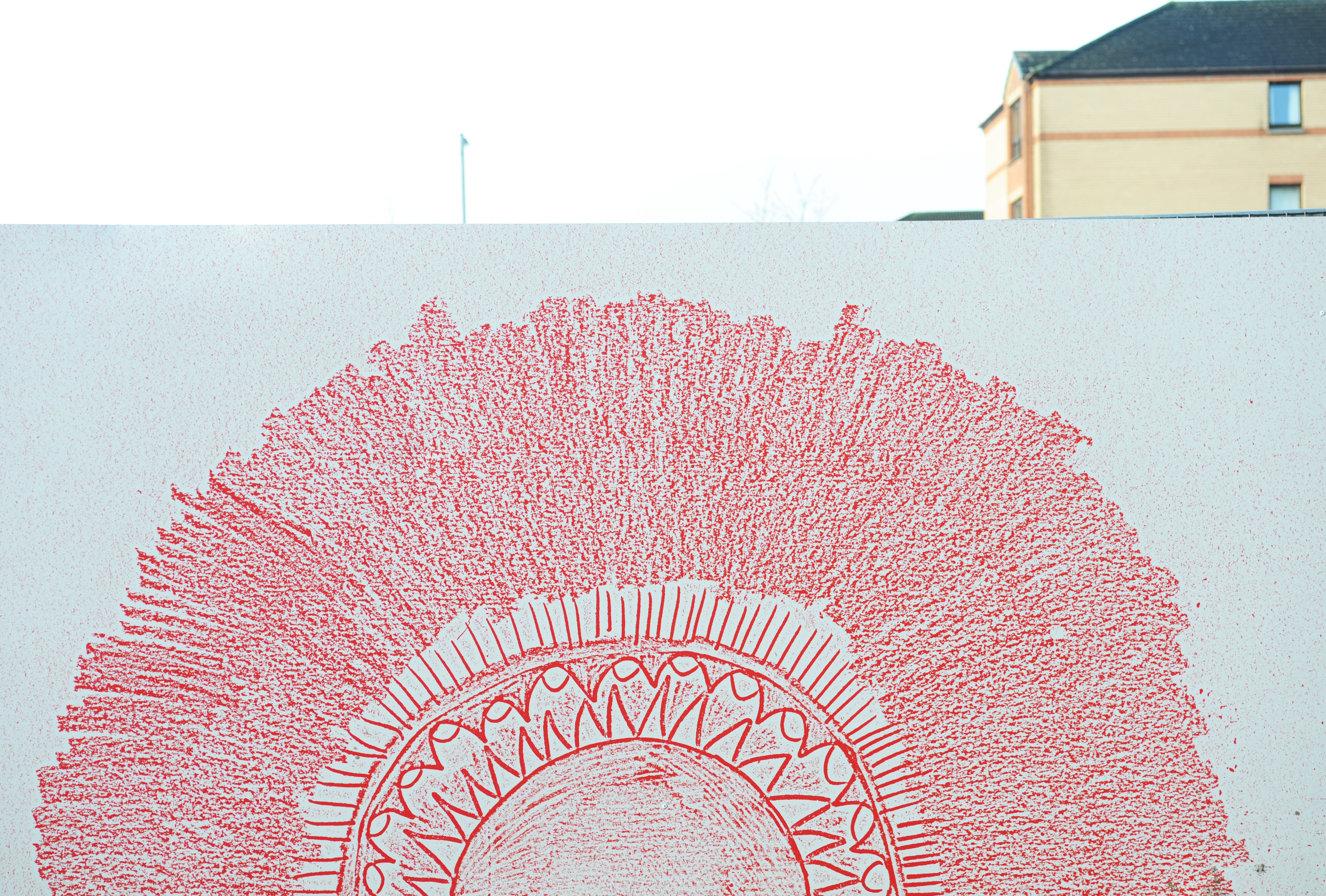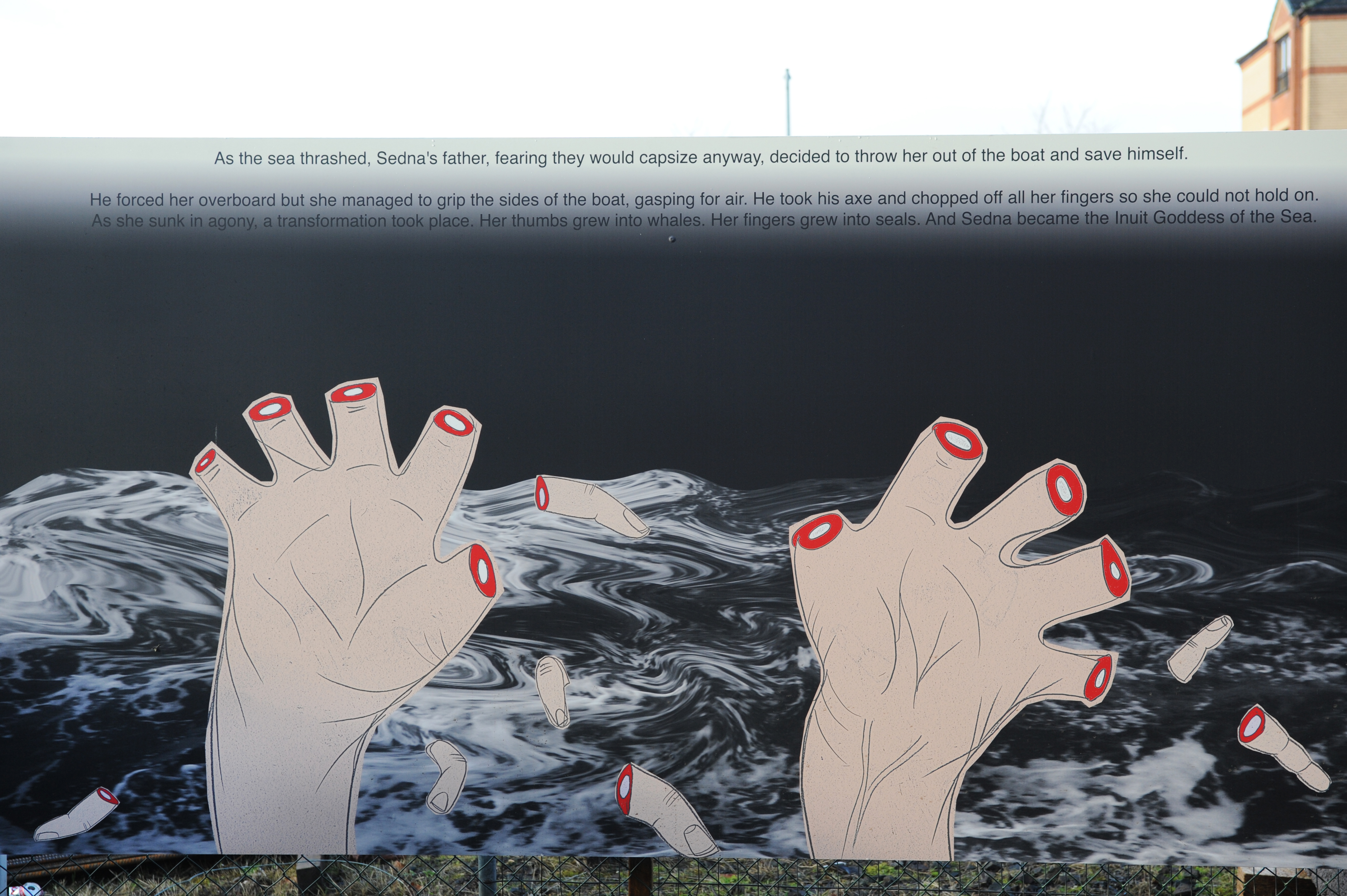Conceived as a form of metal story book, these hoardings depict the creation myth of Sedna the Goddess of the Sea in Inuit culture. Within the indigenous narrative a young girl is forced into marriage, neglected, abused, physically assaulted and left for dead. Her transformation and empowerment at the end of the myth illustrates the potential of women to overcome male violence and strive for justice. The story also demonstrates that abuse of women is both ancient and normalised across myriad cultural forms.The work is permanently situated adjacent to Glasgow Women’s Library and was made during a year long residency between the library and Castlemilk Community Centre which focussed on Violence Against Women.
 “Her father took his axe and cut off all her fingers so she couldnt hold on, and she sunk in agony. Sedna’s severed thumbs turned into whales. Her severed fingers turned into seals. And she became the Inuit Goddess of the sea.
“Her father took his axe and cut off all her fingers so she couldnt hold on, and she sunk in agony. Sedna’s severed thumbs turned into whales. Her severed fingers turned into seals. And she became the Inuit Goddess of the sea.
The Inuit show Sedna great respect because she feeds them. And when her anger surfaces, which is often, they send their most powerful shamans to the depth of the ocean to comb her hair.
On the 14th of November 2003, Planetoid 90377 was discovered and named after Sedna. Sedna is in the outer reaches of the solar system, three times further from the sun than Neptune and has an exceptionally long and elongated orbit, taking approximately 11,400 years to complete.
While Sedna orbits, there are women in this city conquering ox demons, with skirts made of tornados. Glaswegian women, bionic women from 1970s television.Crystaline clustered women, women assuming monumental shapes in modern materials, among immobile bronze men on horseback. 3D printer woman, speaking in tongues, transforming and transferring.”
Conceived as a form of metal story book, these hoardings depict the creation myth of Sedna the Goddess of the Sea in Inuit culture. Within the indigenous narrative a young girl is forced into marriage, neglected, abused, physically assaulted and left for dead. Her transformation and empowerment at the end of the myth illustrates the potential of women to overcome male violence and strive for justice. The story also demonstrates that abuse of women is ancient and normalised across myriad cultural forms.The work is permanently situated adjacent to Glasgow Women’s Library and was made during a year long residency between the library and Castlemilk Community Centre which focussed on Violence Against Women.

